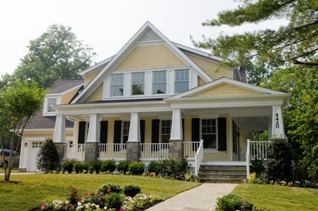Design Potential
A fresh design consciousness has emerged within the modular industry over the past few years, spurred partly by the residential construction boom and manufacturers’ need to set their products apart from the competition. Before the housing downturn and recession, many architects also partnered with modular manufacturers to offer innovative factory-built houses at various price points, generating substantial interest among design-savvy consumers.
The idea that modular construction allows little room for creative expression is not uncommon, but the best modular manufacturers can produce nearly any house a designer can think up. The design simply must be optimized for the factory’s production process and local transportation requirements.
“There are always design features that will lend themselves better to modular construction if they’re slightly modified or tweaked; I wouldn’t call that a design restriction,” says Chuck Straub, division sales manager for modular company Penn Lyon Homes, which works with about 80 custom builders throughout the eastern part of the United States.
Both Penn Lyon and Haven say they are able to achieve nearly any design feature. For example, open spans may be more difficult to accomplish in a modular format, but both companies have devised solutions to deliver them. Sometimes a particular feature must be fabricated and supplied to a project as components rather than a complete module.
“I don’t honestly think that the systems-built process limits the design possibilities,” says Lerner of Meridian Homes. “It’s just a matter of how much more work you’re going to have to do in the field and how much more money it’s going to cost to implement the design.” The idea that one room equals one module and is therefore restricted to the width allowed on roads doesn’t necessarily apply, because larger rooms can be shipped in multiple pieces, according to Lerner, although he notes that it is less efficient.
New World Home’s experience in creating its extensive collection of designs illustrates modular’s capacity for flexibility. “We didn’t confine ourselves to boxes. We started with a farmhouse and we worked it out with the factory,” Schmetterer says. “You can’t just ignore the inherent production efficiencies in a plant, but we can take great design and configure to maintain the efficiencies of production.”



